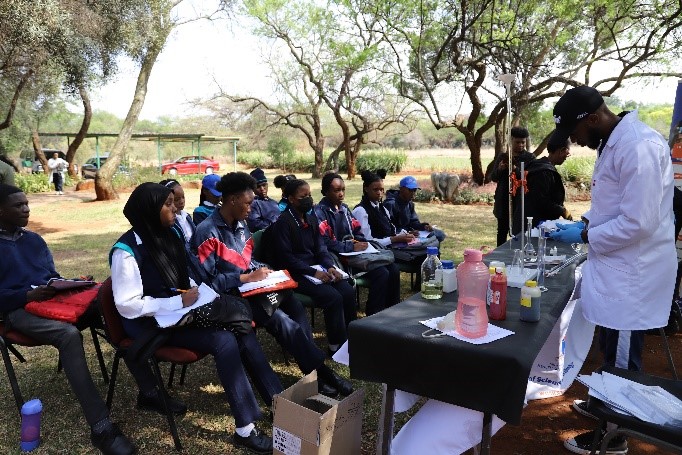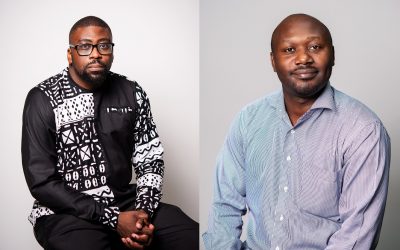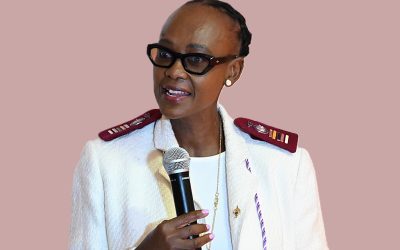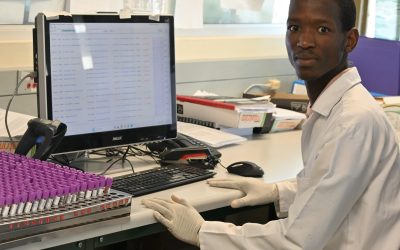The Sefako Makgatho Health Sciences University (SMU) has embarked on an ambitious initiative to enhance science education in under-resourced schools through its Mobile Science Outreach Project. Spearheaded by Florence Seseng, a Lecturer at SMU’s School of Science and Technology, the project aims to ignite a passion for science among learners and improve their academic performance through hands-on, activity-based learning.
 The Mobile Science Lab is designed to address critical gaps in science education by providing learners with practical exposure to scientific experiments. “Many schools, especially in underserved areas, struggle with inadequate infrastructure and a lack of essential laboratory equipment,” Seseng explained. “This makes it difficult for learners to grasp scientific concepts, conduct experiments, and develop analytical thinking skills.”
The Mobile Science Lab is designed to address critical gaps in science education by providing learners with practical exposure to scientific experiments. “Many schools, especially in underserved areas, struggle with inadequate infrastructure and a lack of essential laboratory equipment,” Seseng explained. “This makes it difficult for learners to grasp scientific concepts, conduct experiments, and develop analytical thinking skills.”
The lab, which travels to selected secondary schools in the greater Tshwane area, ensures that Grade 10–12 learners have access to hands-on learning experiences. Schools benefiting from the project include Diphetogo Secondary, Kgathoentle Secondary, and Wallmansthal Secondary, among others.
Using state-of-the-art equipment, learners engage in a range of experiments in biology, chemistry, and physics. “The objective is to make science more interactive and engaging,” Seseng noted. “We encourage students to perform experiments, formulate hypotheses, and analyse results, helping them develop a deeper understanding of scientific principles.”
Teachers also benefit from the initiative, gaining access to resources and professional development opportunities. “Workshops are organised to help educators explain scientific concepts effectively using real-world examples,” said Seseng. “By equipping teachers with knowledge and tools, we ensure that the impact of the project extends beyond our visits.”
Positive impact and measurable results
The project has already yielded significant improvements in learner engagement and performance. According to a report from Mapenane Maths, Science & ICT School of Specialisation in Zone 16, Ga-Rankuwa, matric distinctions in science subjects increased from 12% to 75% since the school partnered with the programme. “Our 2024 matric pass rate has reached 94%,” the school’s report highlighted. “The quality of results has improved, with more learners achieving Bachelor-level passes.”
Seseng attributes this success to the interactive nature of the programme. “Hands-on activities make science enjoyable and accessible. Students are more engaged, and their interest in science careers has grown substantially.”
Despite its success, the project faces challenges, including limited equipment and resources. “Conducting experiments in schools without proper facilities can be time-consuming and requires meticulous planning,” Seseng admitted. However, she remains optimistic about expanding the programme. “We aim to introduce an after-school science club in participating schools and encourage learners to take part in science fairs and Olympiads.”
To sustain and expand the initiative, SMU collaborates with government and private sector partners. “The project is primarily funded by the university, but we also work with organisations like the National Research Foundation’s South Africa Agency for Science and Technology Advancement (NRF-SAASTA) and the Pretoria Botanical Gardens,” Seseng said.
Looking ahead, Seseng hopes to inspire more students to pursue careers in science. “Dreams can come true when we work hard and strive for excellence,” she said. “We want to nurture the next generation of scientists who will contribute to solving real-world challenges.”
Schools interested in participating in the programme can request a visit via email and complete a school needs assessment form.
With the continued dedication of SMU and its partners, the Mobile Science Outreach Project is set to leave a lasting impact on science education, fostering curiosity and innovation among young learners.
By Tumelo Moila



